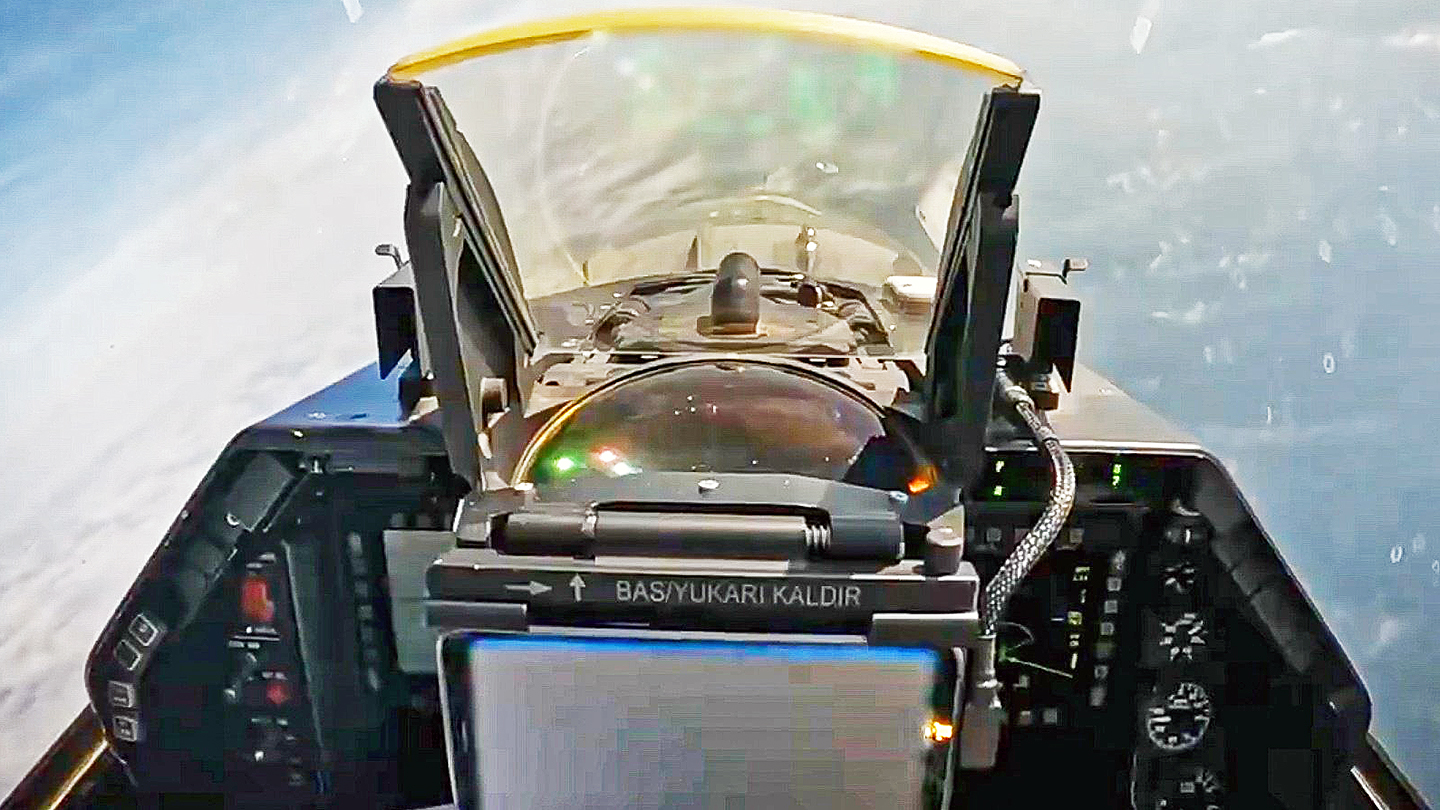Turkey has begun using tablet computers in the cockpits of its F-16 fighters to help with the rapid integration of new locally-developed weapons. This has interesting parallels with Ukraine’s use of such devices to allow its Soviet-era jets to employ Western air-to-ground weapons — something you can read more about here.
The tablet can be seen in the cockpit of an F-16 in a recent video showing a test launch of the domestically developed SOM-J standoff missile. The tablet is mounted on the Input Control Panel (ICP), which is located on the center console beneath the head-up display. The ICP is used to select weapons, navigation settings, and radio communications, among other functions. At the same time, the pilot has another tablet on their knee, something that has become increasingly common, augmenting the information available via the aircraft’s mission systems and helping eliminate cumbersome paper books in the cockpit.
In this context, the tablet is part of the UBAS, also known in English as the Aircraft Independent Firing System. Using Turkish-designed software, the UBAS provides a weapons interface for the use of Turkish-made stores, like the SOM-J. Reportedly, UBAS is installed in Turkey’s upgraded F-16C/D Block 40 aircraft but is not compatible with older Vipers. Exactly how many aircraft are outfitted with the device is unclear, and it remains possible that it’s primarily intended for test work, before the stores are added to Turkish-made aircraft and drones. On the other hand, with such a capability readily available, it would be surprising if it were not introduced more widely on Turkish F-16s.
As for the SOM-J, this weapon was developed by Turkey’s Roketsan, on the basis of the same company’s Stand-Off Missile (SOM), as used by the F-4E and F-16, but was planned for integration on the F-35, which would have carried it internally. Although Turkey was ejected from the Joint Strike Fighter program, developmental work on the SOM-J continued. The missile reportedly has a range of at least 170 miles and uses GPS/inertial navigation system (INS) for guidance, with an imaging infrared seeker for the terminal phase. The SOM-J is around 12.8 feet long and weighs approximately 1,190 pounds.
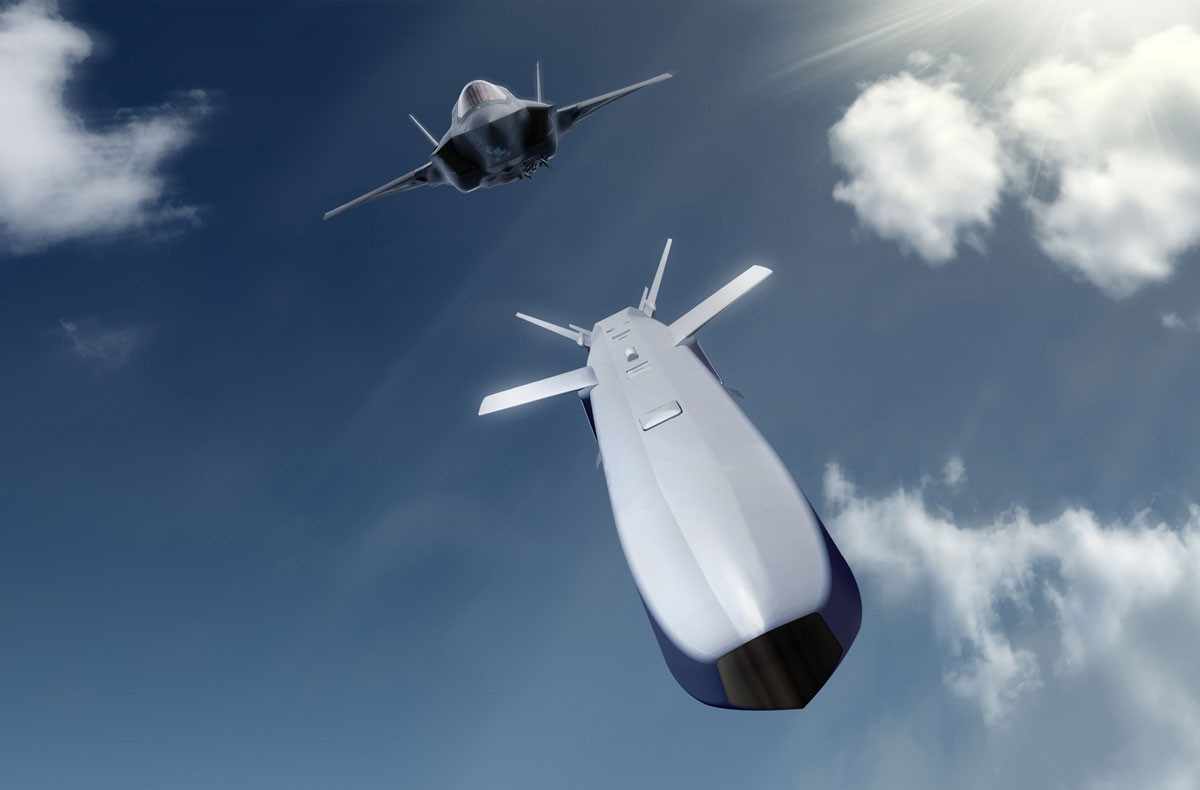
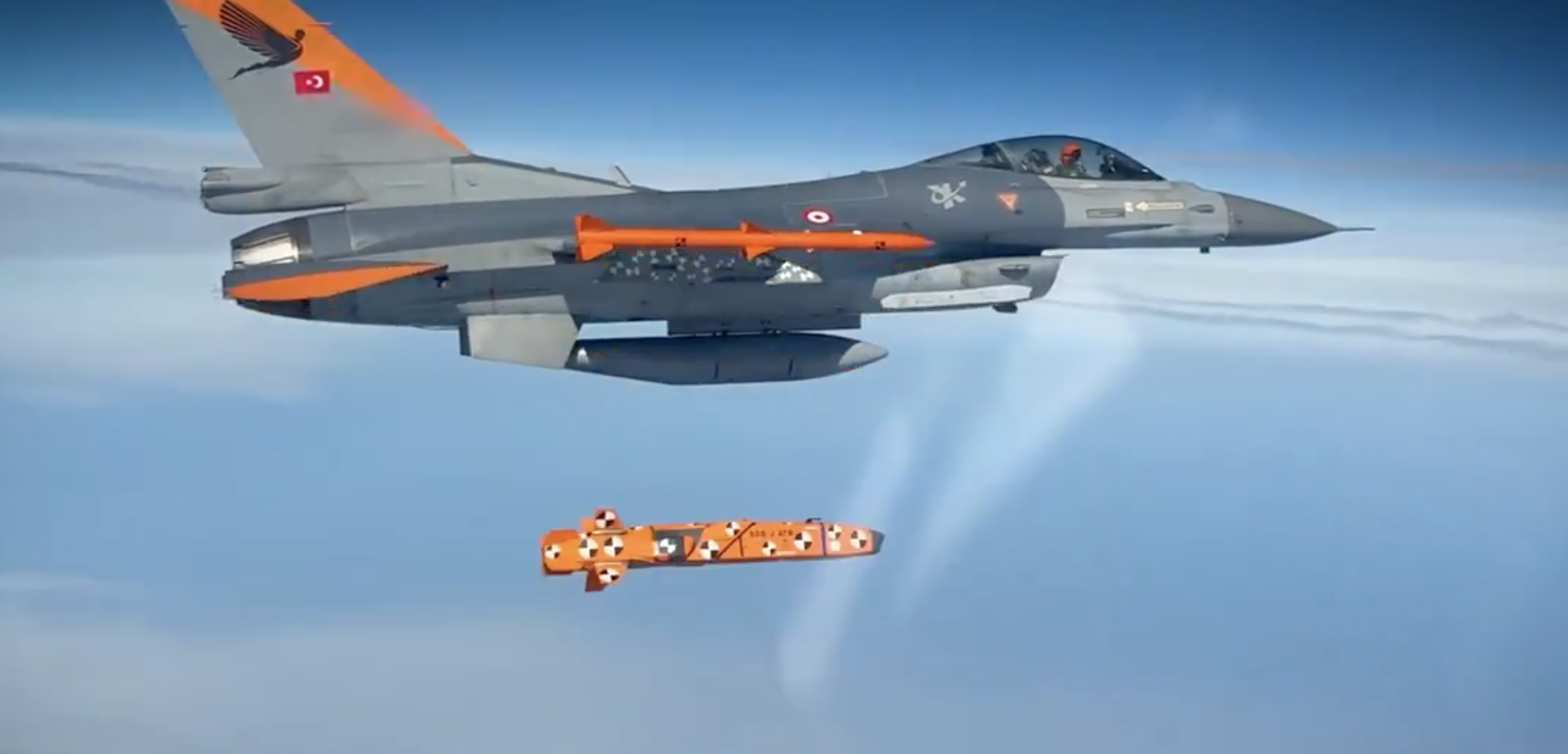
Tablet-based workarounds to integrate new weapons on existing aircraft platforms are now something of a growth area.
In the case of Ukraine, which we have explored in depth in the past, its Soviet-era fighters lack the kinds of data bus interfaces that would ensure seamless compatibility with Western-made weapons.
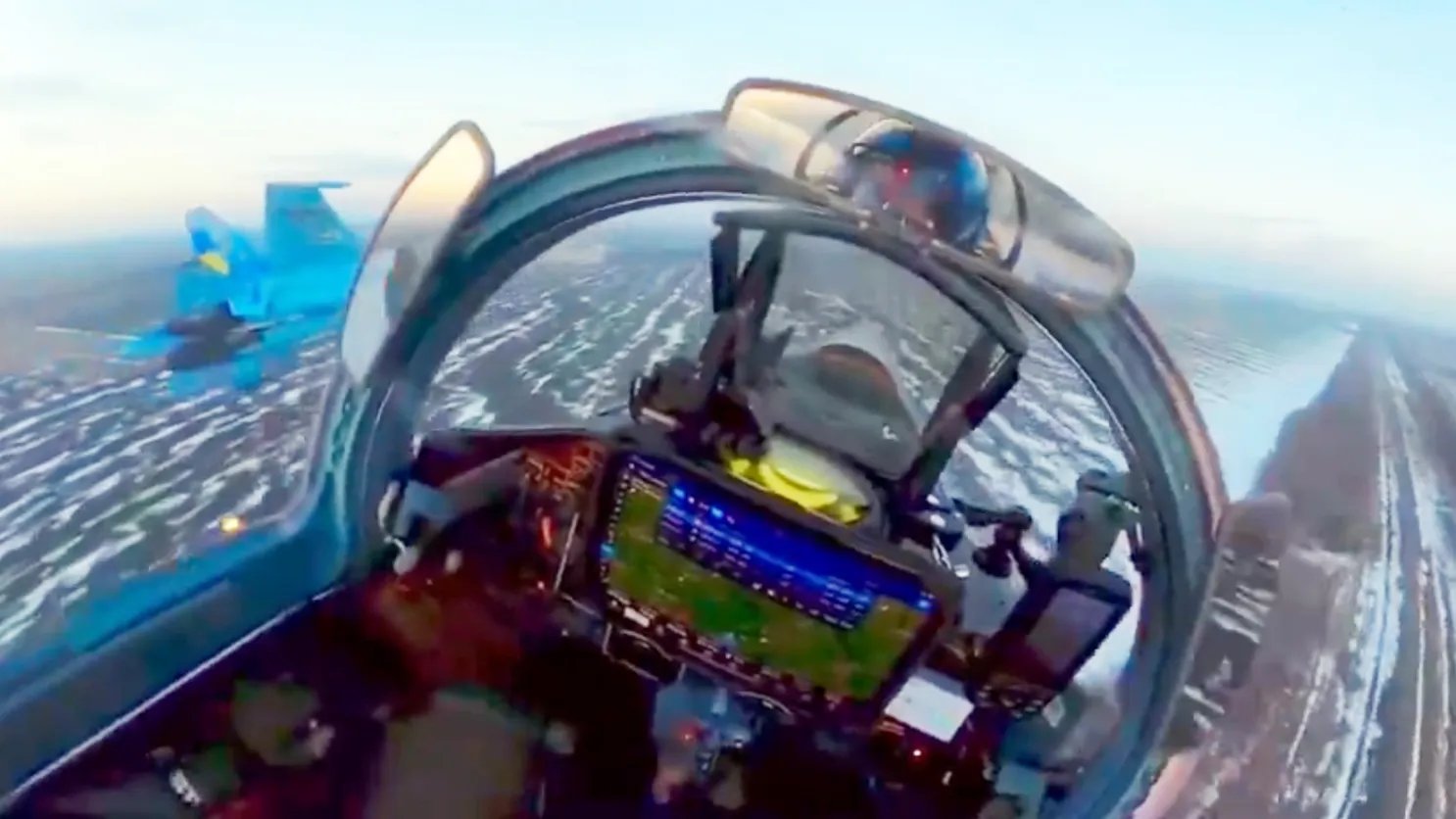
Last year, U.S. Undersecretary of Defense for Acquisition and Sustainment Dr. William LaPlante explained:
“There’s also a series of … we call it ‘air-to-ground,’ it’s what we call it euphemistically … think about the aircraft that the Ukrainians have, and not even the F-16, but they have a lot of the Russian and Soviet-era aircraft. Working with the Ukrainians, we’ve been able to take many Western weapons and get them to work on their aircraft, where it’s basically controlled by an iPad by the pilot. And they’re flying it in conflict like a week after we get it to him.”
As well as tablets in the cockpit, Ukrainian aircraft are also using specialized pylons on which the Western-made weapons are carried. You can read more about those here.
For Turkey, the situation is essentially reversed, with the problem being how to integrate new Turkish-made weapons onto older U.S.-made F-16s.
Turkey has a fairly unusual position regarding the kind of upgrades it can make to its F-16 fleet, a result of the sometimes-strained relations between Ankara and Washington.
Turkey’s F-16 fleet is the third largest in the world, and the country’s Vipers have seen extensive action in combat operations. With any replacement for them some way off, Turkey has undertaken various F-16 upgrades, including a service-life extension, performed by the domestic firm Turkish Aerospace, formerly known as Turkish Aerospace Industries (TAI).
While Turkey operates Block 30, 40, and 50 aircraft, it seems that the UBAS, currently at least, is restricted to the Block 40/50 jets that were modernized with the Common Configuration Implementation Program (CCIP) upgrade, which was completed in 2015.
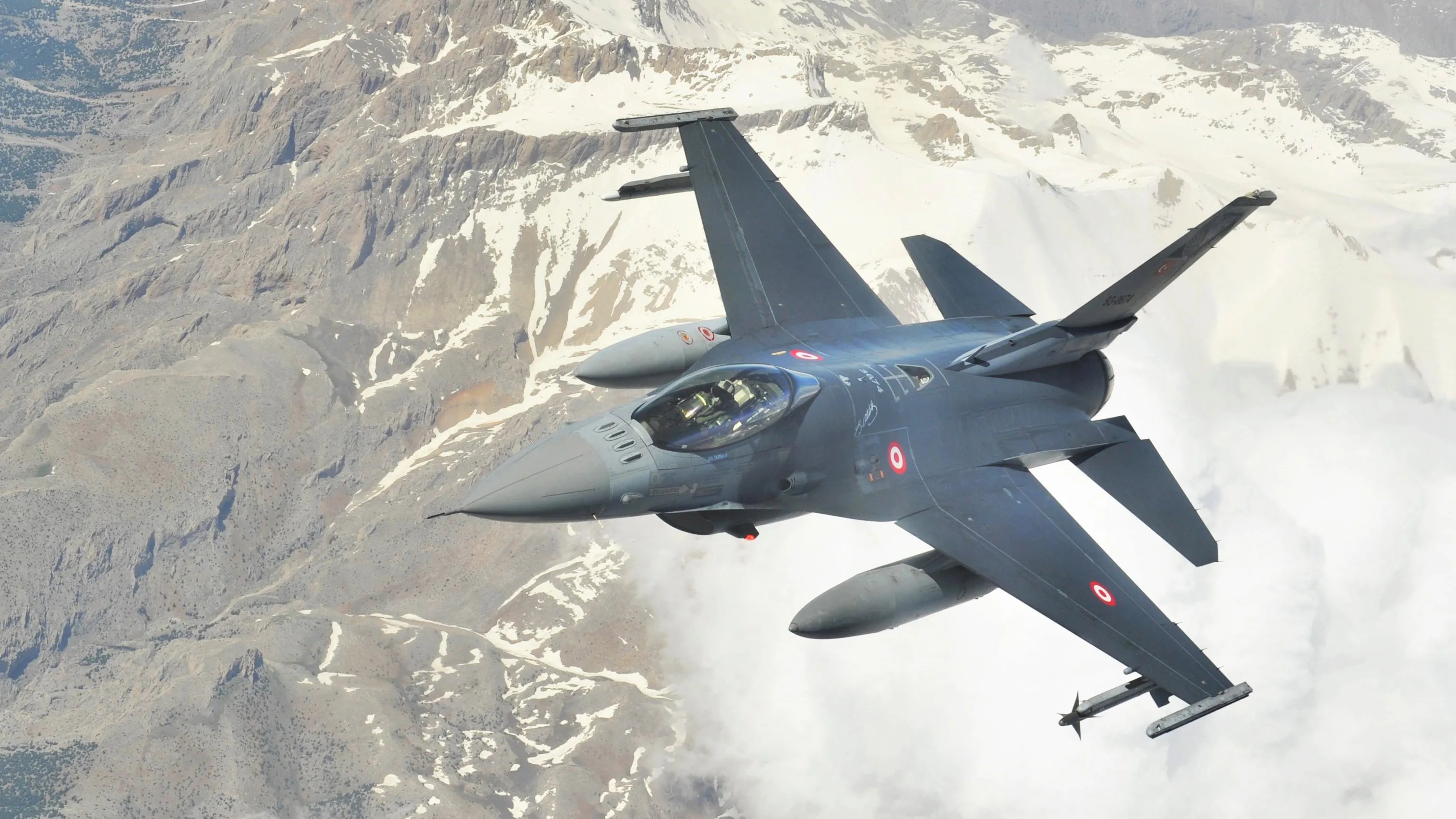
The CCIP package came with the mechanically scanned AN/APG-68(V)9 multi-mode radar, a new mission computer, color cockpit displays, enhanced horizontal situation indicator, the Joint Helmet Mounted Cueing System (JHMCS), Link 16 datalink capability with the Multifunctional Information Distribution System to increase pilot situational awareness and communication, new air-to-air interrogator, and compatibility with several new targeting systems and weapons, including the AIM-9X air-to-air missile and the Sniper targeting pod.
Now, thanks to UBAS, these aircraft can also carry a range of Turkish-made ordnance and this can be added without having to modify the F-16’s software, which features proprietary updates released in the form of ‘tapes.’ Even without access to the software, Turkey can add new weapons to the jets using UBAS.
While the system has been shown to be used for employment of the SOM-J, it likely provides a similar interface with other locally developed stores. These may well include the HGK 500-pound INS/GPS-guided bomb, KGK 500-pound or 1,000-pound glide bomb, and the LGK-82 — an indigenous version of the 500-pound GBU-12 laser-guided bomb. Locally made air-to-air weapons are also being integrated on Turkish F-16s, although these don’t appear to rely on the UBAS interface.
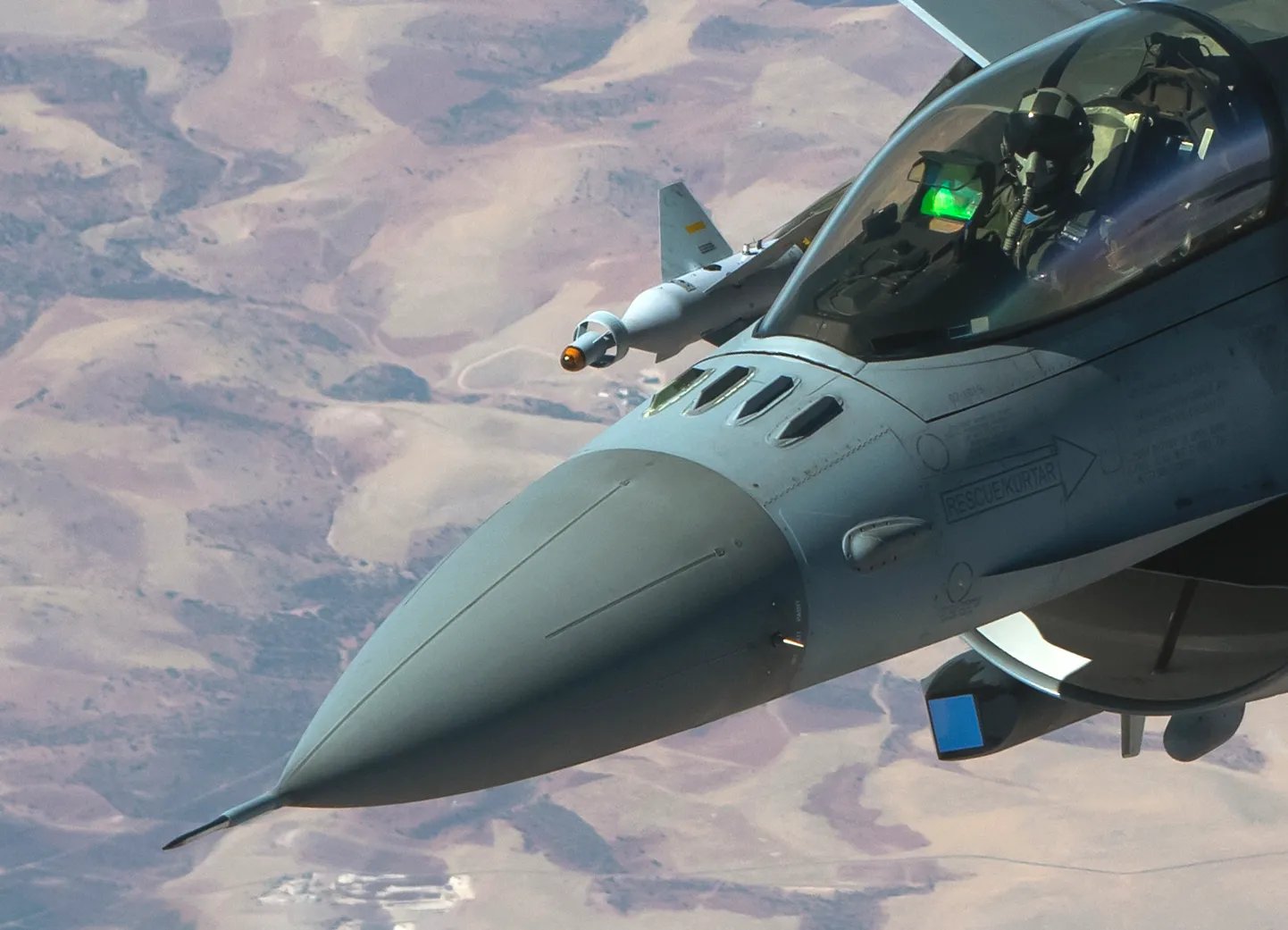
For Turkey, having the ability to integrate weapons like these on the F-16 independently of the original manufacturer, or other U.S. firms, is highly significant.
Relations between the United States and Turkey have been fractious in recent years, with a considerable knock-on effect on the Turkish Armed Forces.
As mentioned previously, Ankara’s insistence on buying Russian-made S-400 air defense systems saw it kicked out of the F-35 program while sanctions were placed on the Turkish Presidency of Defense Industries.

Meanwhile, the Turkish intervention in Syria in 2019 prompted calls for a full-on arms embargo from very powerful members of Congress, including proposals for an arms embargo and a host of other sanctions against Turkey.
These tensions led to worries that the future supply of U.S.-made arms to Turkey, potentially including spares and support for its F-16s, could be cut off.
Perhaps anticipating U.S. sanctions, Turkey reportedly began stockpiling spare parts for its F-16s in 2019.
At the time, Joseph Trevithick of TWZ noted:
“Having parts in reserve would be especially critical for the F-16s, which are the Turkish Air Force’s most numerous and advanced combat aircraft and will continue to be so for years to come, especially in the absence of F-35 deliveries. Without these stockpiles, the Vipers could very quickly end up grounded, leaving Turkey in a particularly vulnerable position.”
At the same time, Turkey has pushed ahead with its own F-16 overhauls and upgrades, which have become more important after the loss of the F-35 deal as well as the continued aging-out of the F-4E, only one squadron remains active in Turkey.
While there is much focus on Turkish Aerospace’s indigenous TF Kaan next-generation fighter, this likely won’t enter service until the 2030 timeframe at the earliest, and there remain questions about the degree to which it relies on U.S.-supplied technology, especially the engines.
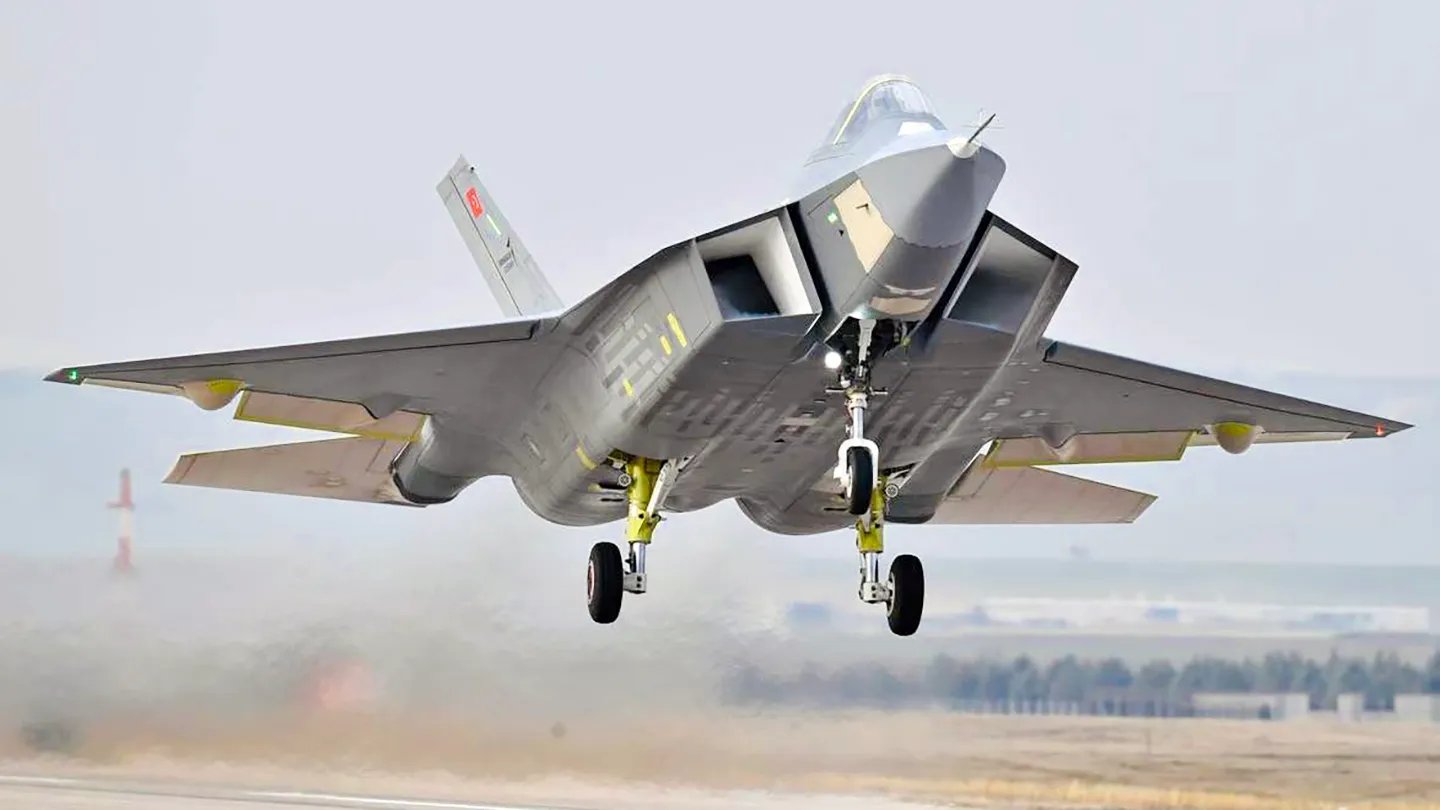
On the other hand, there have been signs that the rift in U.S.-Turkish relations has been healing, even under the previous Biden administration.
Early in 2024, then-President Biden said he wanted lawmakers to approve the sale of F-16s to Turkey “without delay,” potentially opening the way for Ankara’s long-stalled acquisition of a new batch of the fighters. The move came after Turkey finally gave its approval for Sweden to join it in the NATO alliance, something that had long been viewed as a requirement for a new F-16 purchase to go through.
Until now, however, there has been no new F-16 sale to Turkey, which means that efforts to extend the service life of the existing Vipers are even more pressing. With the likelihood that at least some of these jets will still be in service until 2050 or beyond, the ability for them to use new types of weapons is very useful. The ability to call upon local industry for these munitions is also critical, since it releases Turkey from a reliance on foreign nations that may be less willing to provide them with arms, depending on political relations at the time.
As well as appearing in the cockpits of Turkish F-16s, UBAS has been installed in Soviet-era Su-25 Frogfoot attack jets operated by Azerbaijan, as part of a Turkish upgrade.
In the first part of this upgrade, known as Merhale-1, the Su-25 adds the UBAS system that allows it to employ Turkish-made KGK-82/83 and TEBER-82 precision-guided bombs, as well as SOM-B1 standoff missiles.
These weapons can all be employed by the Frogfoot without any further avionics modernization, although it’s worth noting that the second phase of the upgrade, Merhale-2, does provide the jet with a new mission computer, radios, communication links, INS, and more.
The Azerbaijan example underscores the unique position Turkey has, thanks to its rapidly exploding defense aerospace sector, especially in terms of munitions and drones — this was not nearly the case in the past. Were UBAS to open up a gateway for integration of multiple weapons on U.S.-made fighters, this would be a huge deal on multiple levels. For export, especially, it could be very significant, allowing foreign operators a quick and rapid way of integrating Turkish weapons, for example, on their U.S.-made aircraft.
Overall, these developments in Turkey underscore the fact that tablets are increasingly providing a vital interface between aircraft and weapons of different origins. Tablets also look like they are becoming critical to the control of Collaborative Combat Aircraft (CCA) drones and other uncrewed platforms, at least initially. They also now play a major role in a variety of training applications.
As such, tablets are proving to be a useful way of adding a host of new capabilities to older platforms and doing so relatively cheaply and quickly.
Contact the author: thomas@thewarzone.com
